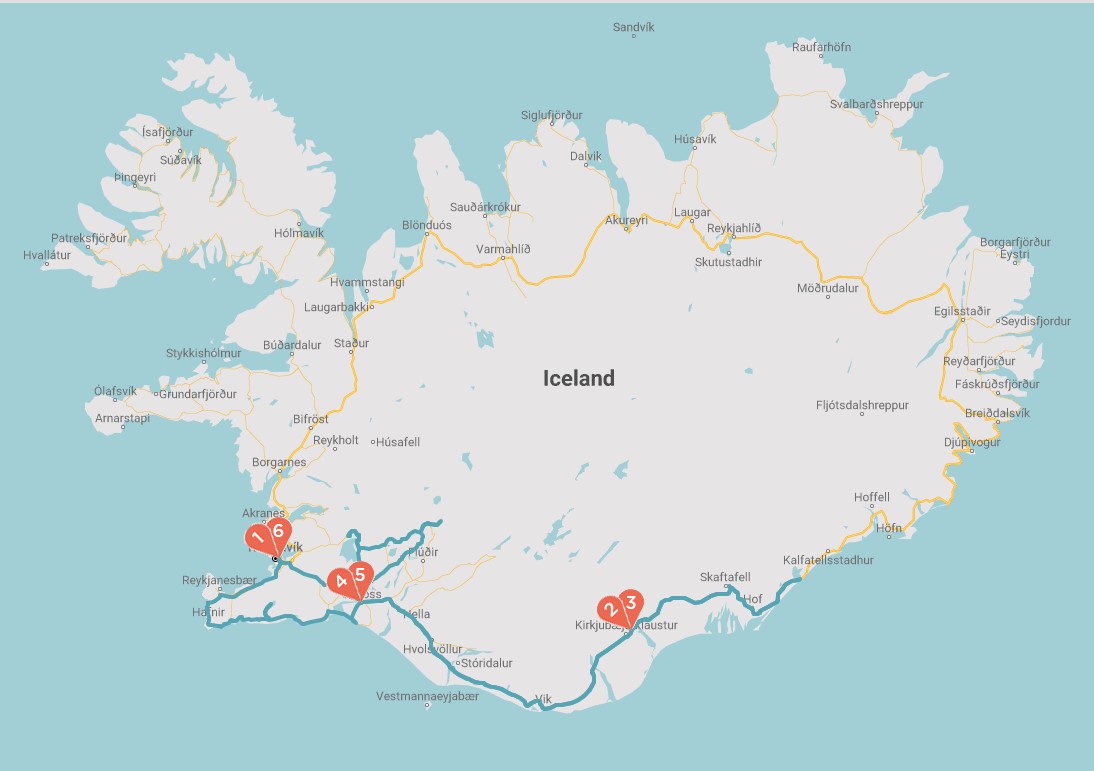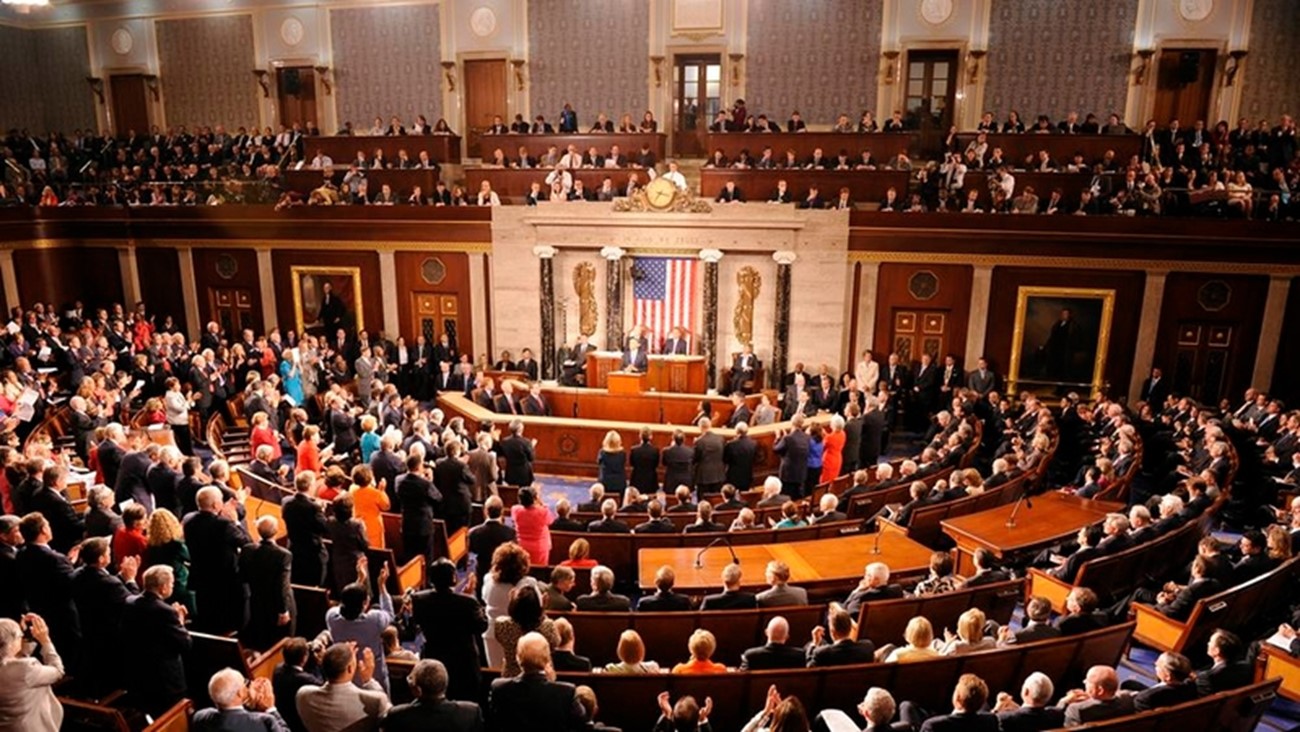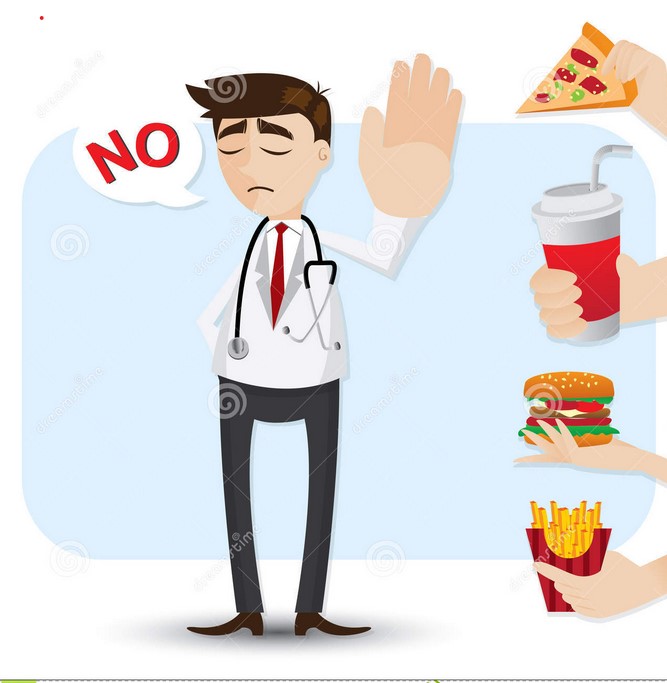After lingering over our luscious breakfast buffet at the Foss Hotel on Sunday morning, we were eager to continue exploring Iceland, the island of fire and ice. Our first day (see here) had whetted our appetites for more. Anne caught a Hertz shuttle and picked up the rental she had ordered. She snared a good one, a practically new 2022 Land Rover Discovery (the odometer read just over 3,000 kilometers), and by the time she parked the vehicle outside our hotel she had figured out the vehicle’s basic controls. And the weather? Please examine the photo Anne took as she rented the car. (We learned to love gray clouds and rain during our stay.)

We quickly loaded loaded our luggage and headed out for our day’s destination, the town of Vik (pronounced veek by Icelanders). Our trip is marked in red on the accompanying map, with our destination located near the lower right corner. Notice the dropped pin on the map. It marks the site of Seljalandsfoss, the only waterfall in Iceland you can walk behind, and one we planned to explore on our way to Vik (see here).
A slight detour
Because we had an urge to check out Iceland’s Atlantic coast as quickly as possible, we took a longer route and headed southwest from Reykjavik on Route 41 with Anne at the wheel, retracing the road we had taken from the airport to Reykjavik’s city center upon arrival. Here’s a tidbit for you: Route 41, we were told, is the only divided highway in all of Iceland.
Although that momentarily surprised us, we soon learned that Iceland has little need for multi-lane highways. The 2022 population of Reykjavik is reported to be about 123,000, and Greater Reykjavik, which includes the capital city itself and the six municipalities around it, is comprised of something like 240,000 residents. Yet that relatively small constellation of folks represents more than two-thirds of Iceland’s total population (about 346,000 inhabitants). And, we discovered, traffic outside of the Reykjavik area was almost uniformly light.

A two lane road (the Ring Road) encircles the entire island. It usually appears on maps as Route 1, and it stretches for about 880 miles to wrap entirely around the island. During our little detour to the coast we stopped at a fishing village, Grindavik (see here), for a snack before making our way to Route 1 and heading eastward. The scene above is typical of much of our time on the Ring Road, especially the thin traffic, the cloud-fog shrouded landscape (often barely visible on our first day of driving), and the prevailing weather. Often we saw little but the bottoms of hills and mountains, and even those at times were nearly obscured by fog. Did you notice the raindrops on our windshield? Healthy cross winds also came into play, but our sturdy Land Rover paid them little attention as it rolled stalwartly along the pavement.
Here I’ll interrupt myself to mention an oddity of the trip, a first for me, and for Anne. Never before had either of us spent time in a foreign country without exchanging U.S. dollars for the local currency. But during our eight joyous days in Iceland, we exchanged no money, nor did we touch a single Icelandic króna! How did that work?
Credit cards carry the day
Iceland is remarkably credit card friendly. Even locals rarely use cash (except for bus transportation, I was told). We discovered that even the smallest businesses would take Mastercard or Visa, so we just flashed our cards to pay for whatever, small or large. I had signed up for a Discover Card as an economy move (Discover does not add foreign transaction fees to charges as my Visa card does). This saved me some money, but not all establishments honored the Discover card.
Here’s a tip for you if you ever plan to visit Iceland. Filling a car’s gas tank isn’t simple. In fact, it offers unique frustrations for the unwary. One doesn’t simply pop in a card at a station and start gassing up. Nope. You have to use a previously assigned PIN with your credit card, and often you also have to estimate the amount of fuel you want to purchase in advance, along with other surprises. Such details aren’t important here, but, if you ever plan to head that way, prepare yourself.
On to Seljalandsfoss
It almost certainly would be impossible to miss the majestic Seljalandsfoss when driving past it. The waterfall, with its broad width and its parking lot churning with cars, jumps out at you with force. As we pulled into a parking spot on the busy lot, a man, obviously an American, approached us with a parking permit, explaining that he and his wife mistakenly had each bought a parking pass, and, since only one was needed, he generously gave the second to us, a friendly gesture much appreciated.
Before walking the couple of hundred yards to the base of the waterfall, we donned our rain wear (it was raining lightly, but we suited up because the heavy mist and splashing gives one a good soaking as one nears the Seljalandsfoss waterfall, which drops about 200 feet (roughly equivalent to a 20 story building). The water tumbles with prodigious power.

When we came along side of the falling torrent, the path behind the falls looked considerably more daunting than we had expected, but, after the briefest of pauses, we plunged ahead and made our way over the treacherous trail strewn with uneven, slippery rocks. I took a brief video of the scene during our moment of indecision.
Did you notice the folks walking behind the falls? They were on an easier stretch of the path. After we emerged from our adventure of encircling the waterfall, and feeling exuberant, we hiked a short distance to second waterfall that splashed into a cave and evaluated that before returning to the car to continue our drive to Vik, feeling quite pleased that we were exploring Iceland on our own.
As often happens in Iceland, we soon ran into another impressive waterfall, this one called Skogafoss. We couldn’t pass it by, so we stopped for a good look. I was satisfied with our adventure at the previous Seljalandsfoss, so I decided to enjoy this wonder of nature from the car, but intrepid Anne marched to the base of the falls and had her presence there documented with help from a nearby traveler.

This waterfall, about 80 feet across, also features a drop of some 200 feet, and nearby on the right side is a rugged stairway leading to the top of the hill and the falls. Anne couldn’t resist the challenge of tramping up those hundreds of steps, which took some good minutes, but she was rewarded with a majestic view of the falls and the river that feeds it. Skogafoss clearly is no puny attraction.
After our second waterfall interlude, we quickly covered the remaining short distance to Vik and checked into the Vik Apartments (a part of the Vik Hotel). Anne had booked us there for two nights. As we were checking in to our modern 2-bedroom apartment, a minor miracle occurred. IT STOPPED RAINING. It was dinner time then, but the patches of blue sky cried for more outdoor exploring.
Which we did! We had passed a recommended stopping point as we approached Vik, because the top of the attraction was shrouded in clouds, and we knew nothing would be visible if we drove up to the summit of Dyrhólaey, a promontory rising 400 feet over the ocean and known for its spectacular view of Iceland’s South Coast. Dyrhólaey was named for the massive arch in a rocky mass just off its shoreline. (Apparently the name means “door-hole” in Icelandic). Now with the clearing skies, we hopped into our Land Rover and headed the short distance westward to drive to the top of that imposing rocky mass. As we approached it glowed brightly in sunshine.


Above is a photo of the “door hole” through which I’m told certain boats have cruised, and even a stunt pilot reportedly flew his small plane through it. The shoreline along here is covered with black sand, a type formed when volcanic rocks (most commonly basalt) have eroded. This sand, much like the more common beige-colored variety on most of the world’s beaches takes millions of years to emerge. How ever they are made, black beaches are striking. In my coming post of Day 4, I will show you just how neat they can be.
After spending the better part of an hour wandering around on our lofty perch, we drove back to Vik and walked a short distance from our apartment to one of the few restaurants in the small town (Vik has about 270 residents). We arrived at the Strondin Pub near 9:30 p.m., and found the place to be cheerfully noisy and very crowded. While waiting for our table, we each ordered a Gull beer (pronounced something like “gutl,” a bright brew that I heartily recommend).
After we were seated and served, we gave our soups two enthusiastic thumbs up, but our Atlantic Char, recommended by our waiter, was decidedly “fishy.” A minor disappointment because the Char was the only less-than-delicious dish we had on our entire trip! We passed up dessert, returned to our apartment, and smiled as we reviewed our second day of exploring the island of fire and ice. Then we went over our next day’s schedule, a full day promising to include such excitements as a boat tour on a glacial lake and an up close and personal visit to a black beach. Stay tuned.





























